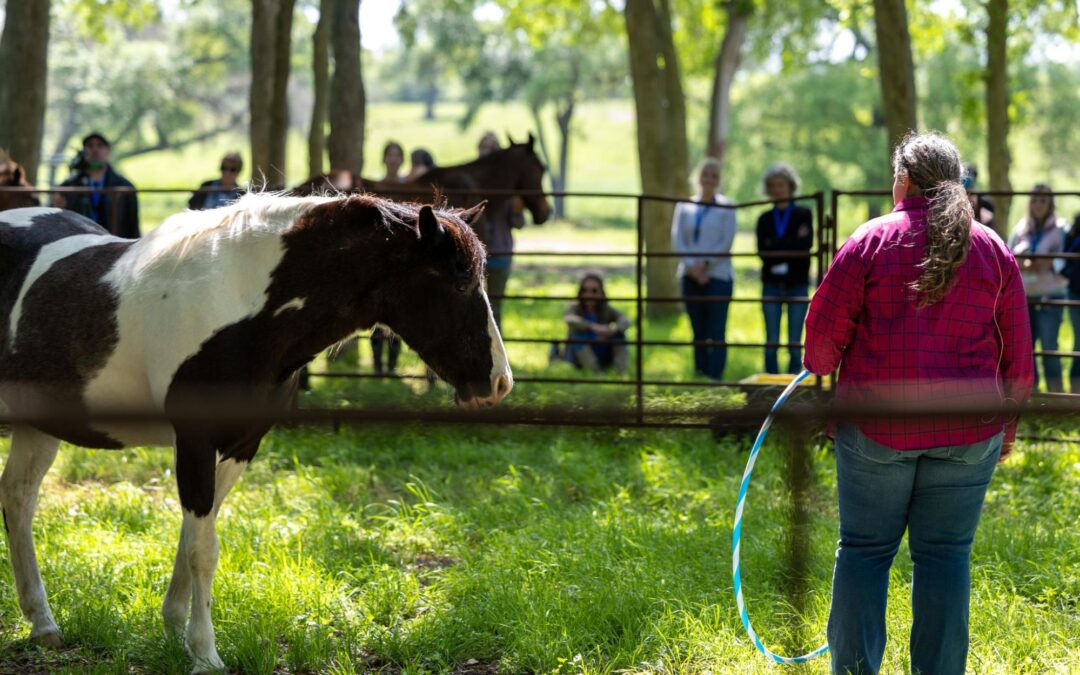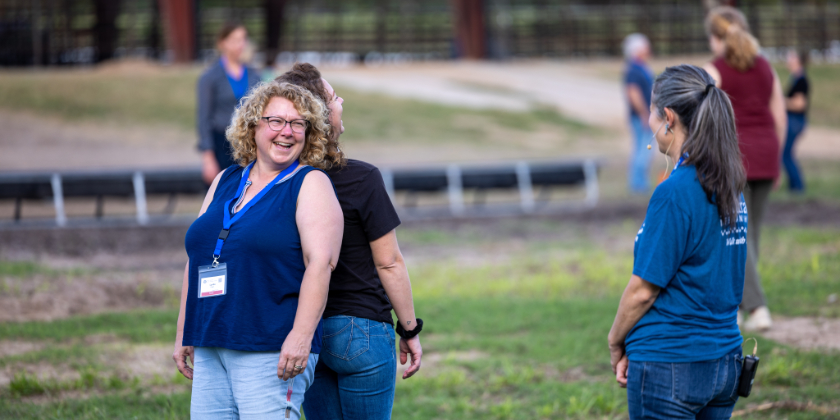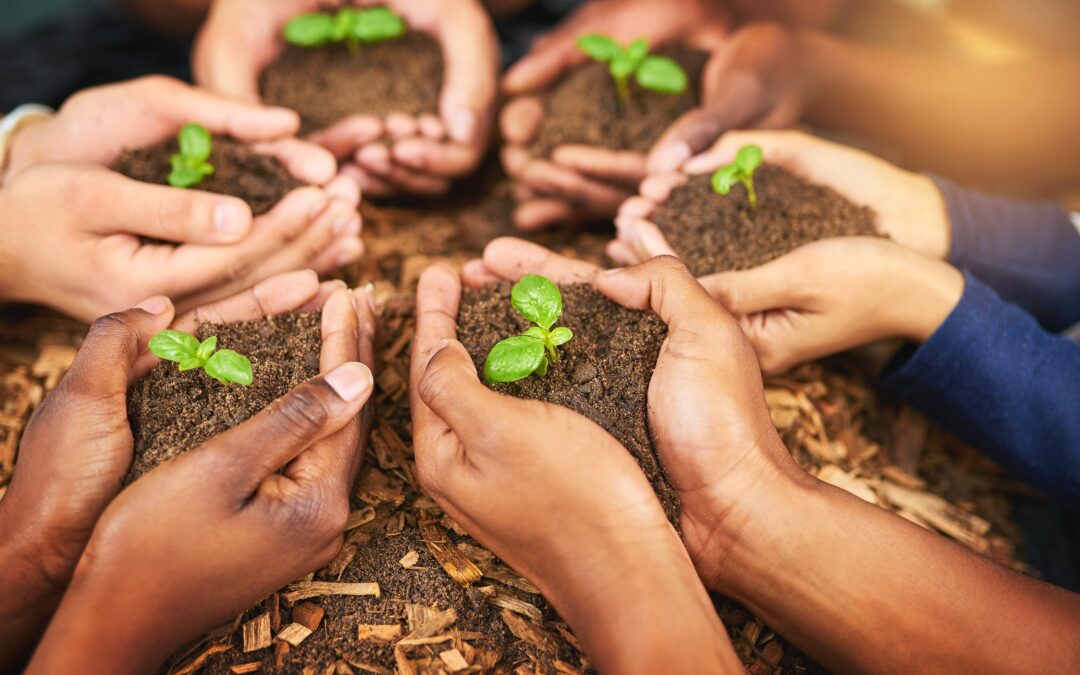
Choosing Your Path: How to Select the Right In-Person Training for NL Certification
When students reach the in-person portion of their Certification journey, a couple questions often come up: Which in-person training can I count toward my certification? And, which one should I take?
There are four different trainings that you can count toward basic certification, depending on your goals and where you are in your journey.
- Fundamentals Practicum – must take Fundamentals first
- Intensive Practicum – must take Intensive first
- Connected Horsemanship – there are no prerequisites for this one, but the Fundamentals is recommended
- Personal Immersion – there are no prerequisites for this one, but the Fundamentals is recommended
Each option fulfills the in-person training requirement in its own way, and each offers a unique kind of learning and transformation.
Working as a Natural Lifemanship professional asks quite a bit of you – there is attunement to your horses, yourself, others, and then the dynamic unfolding of the relationships between. These in-person trainings offer deep dives into each of these elements.
You can continue to grow and develop yourself through intensive exploration of your horse’s experience, your own personal experience, or apply all you have learned in a practical experience.
Connected Horsemanship: Turning Toward Horses
If your next step calls you to the horses, Connected Horsemanship is the place to go.
Led by NL equine professionals, Connected Horsemanship is an opportunity to deeply attune to the horse’s experience. You will observe, practice, and apply the principles of connection directly in the arena. This training is for those who want to refine their skill and clarity in working with horses— the NL way.
Many who attend describe Connected Horsemanship as a return to the heart of the work. If you are ready to grow your horsemanship and reconnect with the roots of relational work through the equine experience, Connected Horsemanship is a powerful and meaningful next step.
Details: 6 participants, 3 instructors, individualized time with one horse for 3 days, $1999
Personal Immersion: Turning Inward
If you feel called to look within yourself, the Personal Immersion is where that work finds purchase. This training, which is really more of a retreat, offers a supportive space to explore your own story through the principles of connection. It is designed for practitioners who are ready to focus on personal growth so they can deepen their self-awareness and understand the inner patterns that shape how they show up for others.
Facilitated by NL therapists and coaches, you’ll be on the receiving end of what Natural Lifemanship principles have to offer. The Personal Immersion experience often becomes a turning point for practitioners and an opportunity to reconnect with what sustains them – to know healing work from the inside out.
Details: 8 participants, 6-7 instructors, 4 days, includes a 3 hour Adult Attachment Interview prior to attending, $2499
The Practicums: Where Learning Becomes Lived Experience
The Practicums are where it all comes together. This is where knowledge begins to take shape in the real world.
Both the Fundamentals and Intensive Practicums offer structured, hands-on learning experiences led by an MH and EP team of Natural Lifemanship trainers. They are designed to help you integrate what you’ve learned so you can bring together horse work, facilitation, and relational awareness into a cohesive, embodied practice.
The Practicums bring together practical skill and professional growth in one immersive experience. They are designed to help you integrate the human and equine sides of the work while receiving real-time feedback and mentorship.
If your goal is to deepen your professional practice, connect what you’ve learned to real-world experience, and grow within a supportive community, the Practicums are the place to do it.
Fundamentals details: 15 participants, 2 instructors, 3 days spent with a variety of horses (think breadth of experience), $999
Intensive details: 12 participants, 3 instructors, you and one other person build a relationship with one horse (think depth of experience), $1299
Trusting the Path You Choose
Each in-person training offers something distinct and valuable. Connected Horsemanship strengthens your relationship with horses and deepens your understanding of connection from their perspective. The Personal Immersion allows you to turn inward so you can tend to your own story and inner world. The Practicums invite you to bring it all together where what you know is translated into what you CAN do.
But know this: there is no single right path, only the one that best meets you where you are. You may be drawn to refine your horsemanship, or to explore your own healing, or to put your learning into practice with structured support. Each choice will lead you to growth, and each will bring you closer to the kind of practitioner you are becoming.
The important thing is to begin.
Choosing Your Next Step
Each in-person training represents a meaningful turn in your journey—whether it’s deepening your connection with horses, diving into your own inner work, or bringing your knowledge to life in the field.
You don’t need to know the entire path. You just need to listen for the next right step.
Maybe that step is refining your horsemanship, or tending to your own healing, or practicing what you’ve learned with real-time feedback. Wherever you feel called, there’s a place for you to grow.
Our 2026 trainings are open for registration—and designed to meet you exactly where you are.
The journey continues, one experience at a time. One moment at a time. One brave, intentional step at a time.
And we’ll be walking with you, every step of the way.







Recent Comments